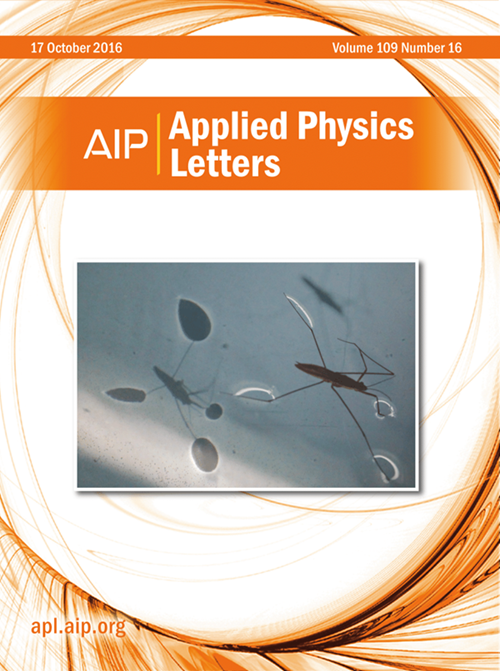Plasmonic properties of gold nanoparticle arrays fabricated using a sequential dewetting process
IF 3.5
2区 物理与天体物理
Q2 PHYSICS, APPLIED
引用次数: 0
Abstract
A scalable, cost-effective technique to fabricate ordered gold nanoparticle arrays with fine control over nanoparticle size and interparticle distance is presented. The array is grown in the pores of an anodic aluminum oxide membrane by the solid-state dewetting process. Control over the nanoparticle size and spacing between particles was achieved by sequential metal deposition and annealing processes, yielding nanoparticles with diameters (D) ranging from 50 to 70 nm and corresponding interparticle distances ranging from 12 to 30 nm. The advantage of this technique is that the nanoparticle size, spherical shape, and hexagonal close-packed ordering of the array can be precisely controlled, allowing for fine tuning of the plasmonic absorption properties. The important parameters that determine the size, shape, and distribution of nanoparticles in the array are the template morphology (dimple geometry) and the thickness of the evaporated metal layer. Above a certain critical film thickness, the nanoparticles coalesce to form nano-islands. The significance of this work is that it provides a reliable technique to assemble metal nanoparticles into high density arrays, with good control over particle shape and distribution. Such arrays can be used to generate highly concentrated electromagnetic fields for plasmonic sensor applications.求助全文
约1分钟内获得全文
求助全文
来源期刊

Applied Physics Letters
物理-物理:应用
CiteScore
6.40
自引率
10.00%
发文量
1821
审稿时长
1.6 months
期刊介绍:
Applied Physics Letters (APL) features concise, up-to-date reports on significant new findings in applied physics. Emphasizing rapid dissemination of key data and new physical insights, APL offers prompt publication of new experimental and theoretical papers reporting applications of physics phenomena to all branches of science, engineering, and modern technology.
In addition to regular articles, the journal also publishes invited Fast Track, Perspectives, and in-depth Editorials which report on cutting-edge areas in applied physics.
APL Perspectives are forward-looking invited letters which highlight recent developments or discoveries. Emphasis is placed on very recent developments, potentially disruptive technologies, open questions and possible solutions. They also include a mini-roadmap detailing where the community should direct efforts in order for the phenomena to be viable for application and the challenges associated with meeting that performance threshold. Perspectives are characterized by personal viewpoints and opinions of recognized experts in the field.
Fast Track articles are invited original research articles that report results that are particularly novel and important or provide a significant advancement in an emerging field. Because of the urgency and scientific importance of the work, the peer review process is accelerated. If, during the review process, it becomes apparent that the paper does not meet the Fast Track criterion, it is returned to a normal track.
 求助内容:
求助内容: 应助结果提醒方式:
应助结果提醒方式:


